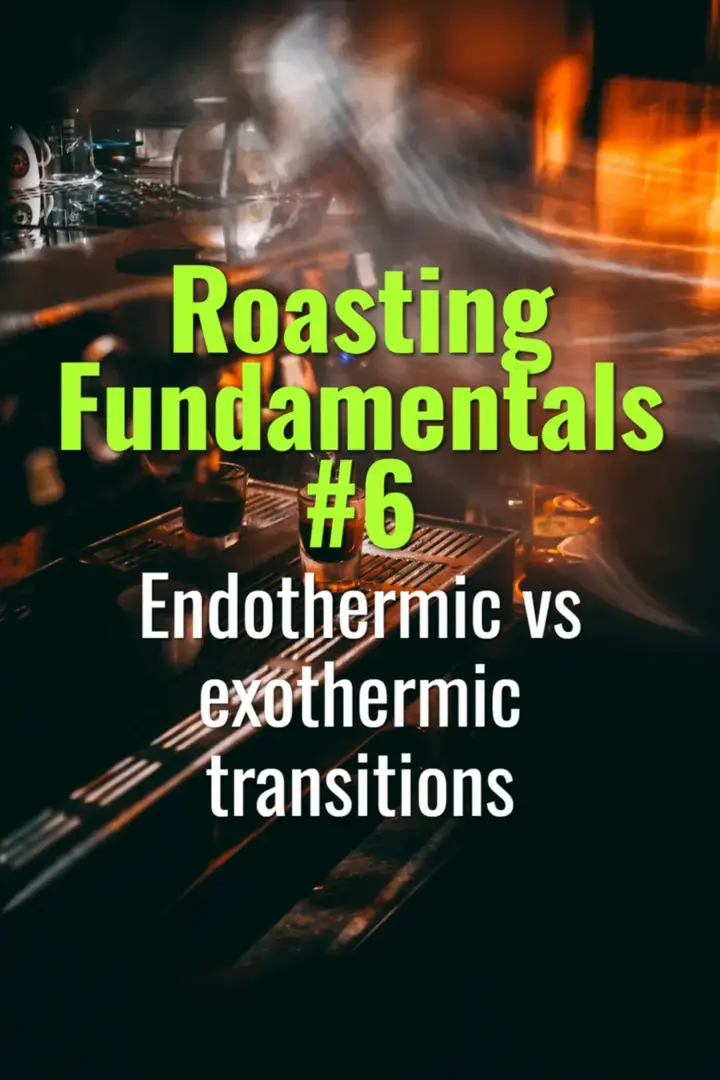Endothermic vs exothermic transitions
This topic explains the thermal events during coffee roasting, highlighting the difference between endothermic and exothermic reactions, and how these affect roast control and flavor development.
- Coffee Basics Nerds
- 1 min read
Article 6 of 12 in Roasting Fundamentals/

Key Concepts
- Endothermic transitions: Processes that absorb heat from the environment. In coffee roasting, these include:
- Moisture evaporation: Beans lose water in the drying phase.
- Bean expansion and structural changes: Requires heat input.
- Exothermic transitions: Processes that release heat. In coffee roasting, these include:
- First crack: Sudden release of steam and gases generates heat, partially self-sustaining the roast.
- Second crack: Less intense, but still exothermic, contributing to roast development.
Practical Implications
- Temperature management: Endothermic phases require steady heat input; exothermic phases can accelerate bean temperature unexpectedly.
- Roast profile adjustment: Recognizing these transitions helps prevent tipping, scorching, or underdevelopment.
- Sensory impact: Properly managing these transitions influences acidity, sweetness, and body in the cup.
Tips for Roasters
- Monitor RoR to anticipate the shift from endothermic to exothermic phases.
- Adjust burner or airflow gradually during first crack to avoid runaway exothermic reactions.
- Use historical roast data to predict transitions for specific bean types.
Summary
Understanding endothermic and exothermic transitions is critical for precise roast control. By anticipating these thermal shifts, roasters can maintain consistency, prevent defects, and optimize flavor development.